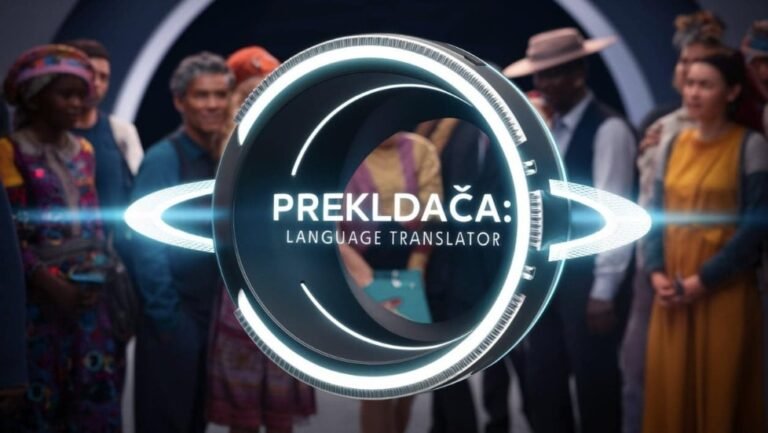Introduction
In today’s globalized world, breaking language barriers is more important than ever. This is where translation tools, or “prekldača” as they’re known in Slovak, come into play. These tools have revolutionized the way we communicate, making it easier to understand and be understood in different languages. Whether you’re traveling, studying, or conducting business, translation tools can be a game-changer.
History of Translation Tools
Early Methods of Translation
Before the digital age, translation was a manual process, relying heavily on bilingual dictionaries and the expertise of human translators. This method, though accurate, was time-consuming and often costly.
Evolution to Digital Tools
With the advent of the internet and advancements in technology, digital translation tools began to emerge. Early versions were basic and often inaccurate, but they laid the groundwork for the sophisticated tools we use today.
Types of Translation Tools
Manual vs. Automatic
Manual translation tools require human input and oversight, ensuring high accuracy and contextual understanding. Automatic tools, on the other hand, use algorithms to provide instant translations, making them incredibly convenient for everyday use.
Online vs. Offline
Online tools, such as Google Translate, require an internet connection to access vast databases of language pairs. Offline tools, while less comprehensive, offer the convenience of translating without needing to be connected to the web.
How Translation Tools Work
Algorithms and Machine Learning
Modern translation tools leverage complex algorithms and machine learning to improve their accuracy over time. They analyze vast amounts of data to understand language patterns and nuances.
Natural Language Processing (NLP)
NLP is a critical component of translation tools. It allows machines to understand and process human language in a way that’s both meaningful and useful, bridging the gap between different languages.
Popular Translation Tools
Google Translate
One of the most widely used translation tools, Google Translate supports over 100 languages and offers text, speech, and image translation.
Microsoft Translator
Known for its integration with other Microsoft products, Microsoft Translator provides real-time translation and is particularly popular in business settings.
DeepL
DeepL is renowned for its accuracy and natural-sounding translations, often outperforming its competitors in side-by-side comparisons.
Features of Modern Translation Tools
Text Translation
The most basic feature, text translation, allows users to input text in one language and receive a translated version in another language almost instantly.
Speech Translation
Speech translation enables real-time translation of spoken language, making it easier to communicate in person or over the phone.
Image Translation
By using OCR (Optical Character Recognition), image translation tools can translate text found in images, which is particularly useful for translating signs, menus, and other printed materials.
Advantages of Using Translation Tools
Accessibility
Translation tools make it possible for anyone to understand and communicate in multiple languages, breaking down language barriers for millions of people worldwide.
Speed
Automated translation tools can process and translate text in seconds, significantly faster than manual translation methods.
Cost-Effectiveness
Many translation tools are free or low-cost, making them an affordable option for individuals and businesses alike.
Limitations and Challenges
Accuracy Issues
While translation tools have come a long way, they are not perfect. Accuracy can vary depending on the language pair and the complexity of the text.
Contextual Errors
Machines often struggle with understanding context, leading to translations that can be literal but miss the intended meaning.
Language Nuances
Languages are full of nuances, idioms, and cultural references that can be difficult for machines to accurately translate.
Best Practices for Using Translation Tools
Combining Tools with Human Oversight
For important documents, combining machine translation with human oversight ensures higher accuracy and better understanding.
Understanding Limitations
Being aware of the limitations of translation tools can help manage expectations and avoid misunderstandings.
Continuous Learning and Adaptation
As translation tools evolve, continuously learning how to use them effectively can enhance their benefits.
Industries Benefiting from Translation Tools
Travel and Tourism
Translation tools are indispensable in the travel and tourism industry, helping travelers navigate foreign countries and communicate with locals.
Education
Students and educators use translation tools to access resources in different languages, facilitating learning and research.
Business and Trade
In business, translation tools enable seamless communication with international clients and partners, expanding market reach and opportunities.
Impact on Language Learning
Supplementing Language Classes
Translation tools can be a valuable supplement to traditional language classes, providing instant translations and helping with vocabulary building.
Independent Study Aid
For self-learners, translation tools offer a convenient way to practice and improve language skills outside the classroom.
Ethical Considerations
Data Privacy
Using translation tools often involves sharing text or speech data. It’s important to consider data privacy and choose tools that respect user confidentiality.
Cultural Sensitivity
Translation tools should be used with an awareness of cultural differences, as direct translations may not always convey the intended meaning in different cultural contexts.
Future of Translation Tools
Advancements in AI and NLP
The future of translation tools lies in continued advancements in AI and NLP, which promise to make translations even more accurate and contextually aware.
Potential Innovations
Innovations such as real-time augmented reality translation and more sophisticated speech recognition technologies are on the horizon, potentially revolutionizing the way we use translation tools.
Case Studies
Real-World Applications
From multinational companies to individual travelers, translation tools are used daily to bridge language gaps and facilitate communication.
Success Stories
There are numerous success stories of people and organizations achieving remarkable outcomes by leveraging translation tools, from closing international deals to navigating new countries with ease.
Conclusion
Translation tools have transformed the way we interact with the world, making it easier to communicate across languages and cultures. While there are challenges and limitations, the benefits far outweigh them. As technology continues to advance, the future of translation tools looks brighter than ever.


